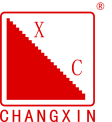What factors are affected by the intensity of fire -resistant pouring materials?
Refractory castables, as an indispensable refractory material, have strength characteristics that are directly related to their quality and performance. In many industrial fields, such as metallurgy, cement production, glass manufacturing and chemical industry, castables play a pivotal role. Therefore, the research and development of high-performance castables is particularly important. Aluminum-magnesium castables are particularly worth mentioning, […]
What factors are affected by the intensity of fire -resistant pouring materials? Read More »
